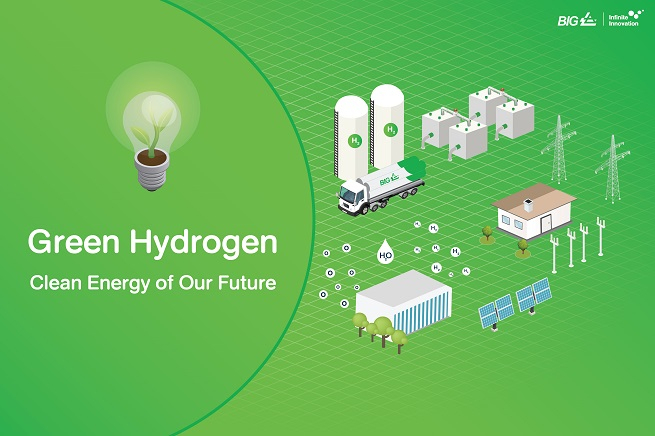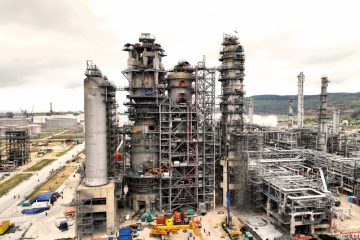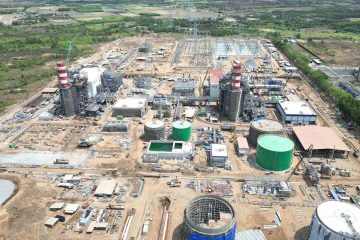Green hydrogen is hydrogen produced by splitting water by electrolysis, using electricity generated by renewable energy. This process produces only hydrogen and oxygen. We can use hydrogen and release oxygen into the atmosphere without any negative effects. This is one of the cleanest ways of generating hydrogen, which can then be used as fuel.
How is hydrogen produced?
In its elemental form, hydrogen acts as an energy carrier – that is, it can transport energy from one place to another, just like we do with fossil fuels. There are several methods of producing hydrogen, but we will discuss 2 main methods:
Thermal process: This method typically involves using high temperatures on hydrocarbon fuels to release hydrogen. The process known as steam reforming is applicable to a variety of hydrocarbon fuels such as diesel, natural gas, gasified coal or biomass.

Electrolysis process: Hydrogen can be produced by splitting water molecules in an electrolyzer in a process called electrolysis. This process is the opposite of what happens in a fuel cell, where hydrogen combines with oxygen to form water and release energy. During electrolysis, energy is used to split water molecules.
Hydrogen is produced by steam reforming, but does not capture the greenhouse gases produced in the process, so it produces carbon emissions. Coal is also commonly used to produce hydrogen gas, then known as black or brown hydrogen. Blue hydrogen is produced from natural gas, but the CO2 created during production is captured and permanently stored underground.
In green hydrogen production, hydrogen is still produced using fossil fuels; however, the emissions from this process are captured by industrial carbon capture and storage (CCS) making it cleaner than black and gray hydrogen. Green hydrogen is the cleanest form of hydrogen production. It is energy produced from renewable sources – possibly a combination of hydroelectricity, wind and solar power (hydrogen produced using solar power is sometimes called yellow hydrogen). Although renewable energy farm installations are on the rise, today only 0.1% of total hydrogen production is truly green.
Why do we need green hydrogen?
To understand the need to produce green hydrogen, we must also understand other types of hydrogen production techniques – such as blue or turquoise hydrogen (produced using a process called methane pyrolysis to produce hydrogen and carbon snake). Another energy source being explored for hydrogen production is nuclear energy. Hydrogen produced using nuclear energy is called pink hydrogen or sometimes also called red hydrogen. This process does not produce carbon emissions but could contribute to the problem of creating future nuclear waste that needs to be disposed of.
On the other hand, green hydrogen offers the best of both worlds as it provides environmentally friendly fuel. As countries look to transition to greener energy sources, hydrogen is expected to play a key role. To ensure we make this change without adding more carbon dioxide to the atmosphere and warming the world even further, some argue that we need to increase the rate of production and use. green hydrogen now.
Green hydrogen can be an alternative energy source in almost any application that currently uses fossil fuels. In such a scenario, hydrogen – which contains three times more energy than the same weight of gasoline and nearly seven times that produced by coal – is being evaluated as an alternative. Additionally, hydrogen used in fuel cells is a power source that can be deployed anywhere on the planet. Hydrogen only requires oxygen to function and produces water as a byproduct.
Hydrogen produced at a green site can be transported to even remote parts of a country in much the same way as fossil fuels today – using existing transportation systems and being used to Powering vehicles, homes and even industries. Instead of using batteries to store energy, hydrogen can be used as a carrier and oxidized when energy is needed, such as electricity or heat.
Due to its advantages, hydrogen could be poised to become a viable energy source for the world. However, hydrogen adoption has been quite slow, and this is largely due to the relatively high financial costs of generating and using the fuel. According to estimates from the Global Energy Center at Columbia University, 70 million tons of hydrogen are produced annually in the US alone. This demonstrates that the technical challenges in transporting and using hydrogen have been understood and resolved.
The cost of the electrolyzer is one of the main factors contributing to the increase in green hydrogen prices, which can range from $3.5-$6/kg. For comparison, gray hydrogen production costs around $1.50/kg, while green hydrogen costs around $2-3 for the same weight. Additionally, because hydrogen has a low volumetric energy density, it is often stored on the vehicle as compressed gas – otherwise, there would not be enough for the average vehicle to ensure long-range travel.
Most current applications use high-pressure vessels capable of storing hydrogen at very high levels. So, there is also the cost of installing tanks and ensuring their safety. Governments must work to introduce policies that can reduce the cost of green hydrogen production as it will help develop new technologies and also clean up the environment.
According to source: antg.cand.com.vn












